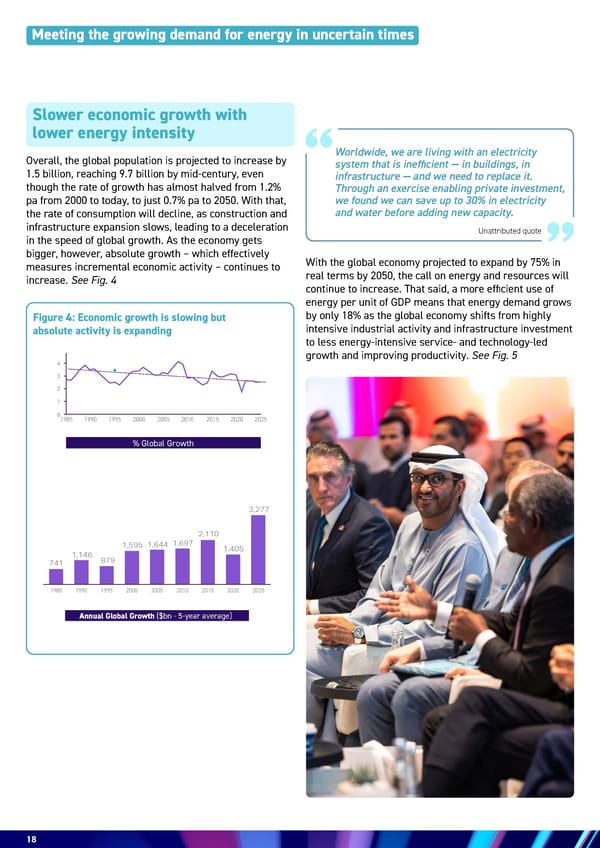18 18 Meeting the growing demand for energy in uncertain times Overall, the global population is projected to increase by 1.5 billion, reaching 9.7 billion by mid-century, even though the rate of growth has almost halved from 1.2% pa from 2000 to today, to just 0.7% pa to 2050. With that, the rate of consumption will decline, as construction and infrastructure expansion slows, leading to a deceleration in the speed of global growth. As the economy gets bigger, however, absolute growth – which effectively measures incremental economic activity – continues to increase. See Fig. 4 Slower economic growth with lower energy intensity Figure 4: Economic growth is slowing but absolute activity is expanding Unattributed quote With the global economy projected to expand by 75% in real terms by 2050, the call on energy and resources will continue to increase. That said, a more efficient use of energy per unit of GDP means that energy demand grows by only 18% as the global economy shifts from highly intensive industrial activity and infrastructure investment to less energy-intensive service- and technology-led growth and improving productivity. See Fig. 5 0 1 2 3 4 5 1985 1990 1995 2000 2005 2010 2015 2020 2025 % Global Growth 741 1,146 879 1,595 1,644 1,697 2,110 1,405 3,277 1985 1990 1995 2000 2005 2010 2015 2020 2025 Annual Global Growth ($bn - 5-year average) Worldwide, we are living with an electricity system that is inefficient — in buildings, in infrastructure — and we need to replace it. Through an exercise enabling private investment, we found we can save up to 30% in electricity and water before adding new capacity.
 Energy & AI: Twin Engines Turbo-Charging Economic Growth Page 17 Page 19
Energy & AI: Twin Engines Turbo-Charging Economic Growth Page 17 Page 19